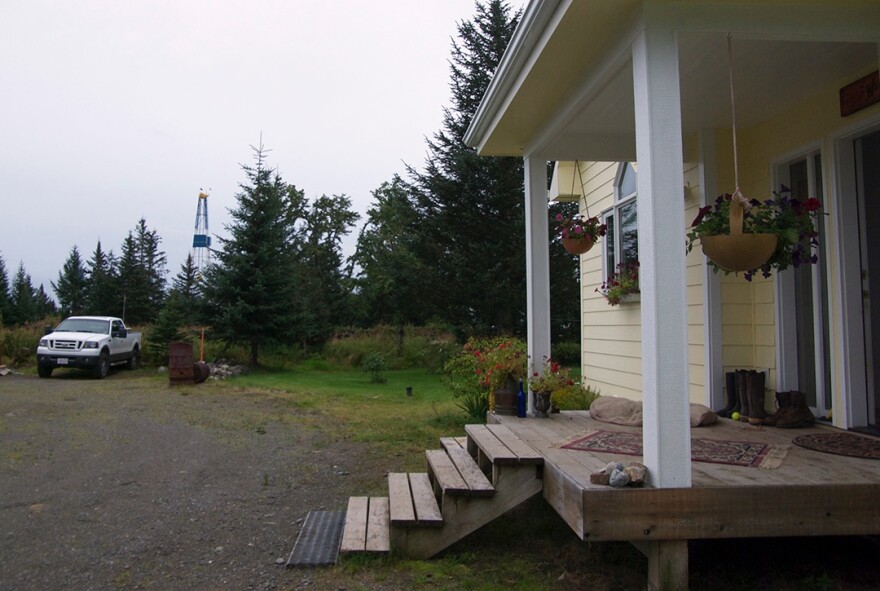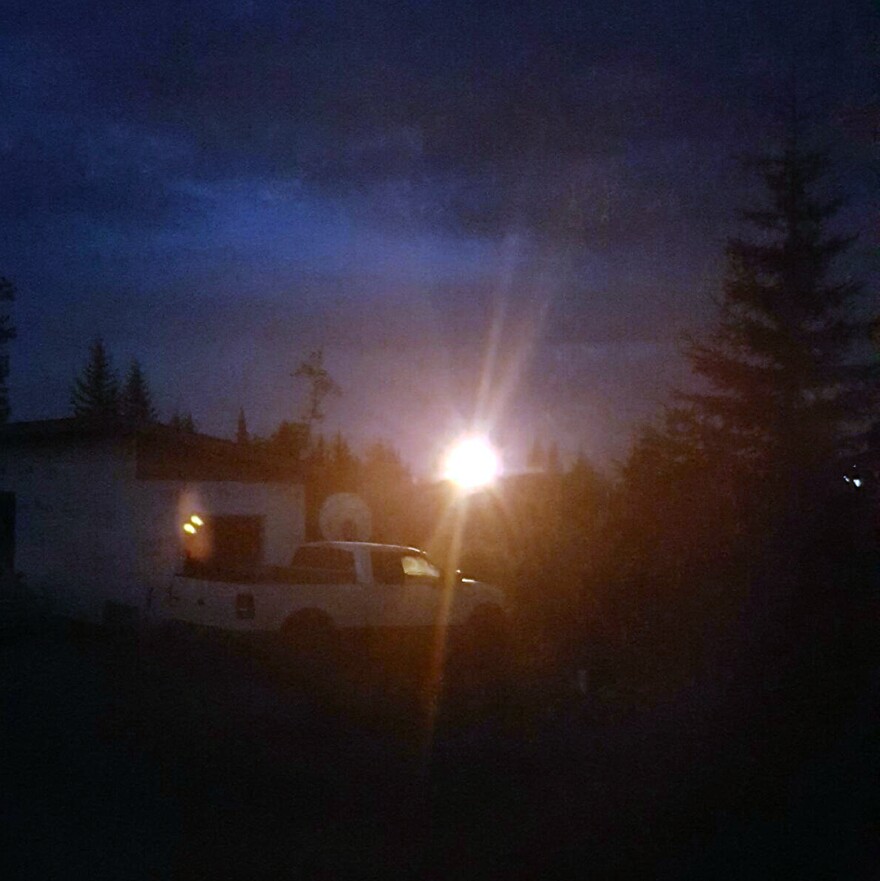Residents of a tiny Kenai Peninsula subdivision near Anchor Point thought they had a little slice of peace and quiet. But a tract of homestead land to the south held an oil test well. And now it’s home to 38 acres of an active oil well, processing train, natural gas flare, workers’ camp, truck filling station and a five-story rig that is about to start drilling 30 more wells.
When Herff Keith retired from the Alaska Railroad in Anchorage in 2007, he wanted a change of pace. Somewhere he could fish, enjoy the view and relax. He found the perfect spot in a tiny subdivision on the bluff above Cook Inlet, seven miles north of Anchor Point, where he lives with his girlfriend, Colette Bewick.
“There’s our moose out there, a cow and calves. It doesn’t bother them right now,” said Keith.

There’s only one other full-time neighbor. The rest of the handful of houses are vacation properties. To the south is the Hansen homestead, which was mostly vacant when Keith built his house, except for on old test well drilled by ConocoPhillips in 2001. Keith didn’t worry much about it. One capped well, abandoned for years. What’s the worst that could happen?
Well, this, the site is now the centerpiece of BlueCrest Energy, an independent oil company based in Fort Worth, Texas, which is constructing a full-blown oil drilling and production operation on the 38-acre pad.
“And it’s just nonstop. They’ve been building a facility. There’s a 52-room hotel next door now. It’s less than 1,000 feet from my property to their property. That’s close,” said Keith.

Unbeknownst to Keith, BlueCrest confirmed a sizable reservoir of high-quality crude and natural gas out below Cook Inlet. Construction on the pad began in September 2015, with plans to directionally drill for oil from onshore. The company expects the project to last 30 years.
BlueCrest reached out to area residents early on. It’s not the company’s preference to set up shop in a residential area. Representatives keep in touch with neighbors and have held several community meetings to give project updates, answer questions and address concerns.
Larry Burgess, health, safety and environmental manager, has been the community liaison for BlueCrest. He is sitting in the cafeteria while kitchen staff is cleaning up after lunch.
“Now, they could see the well when they moved in over there. They could see this existing well. And, unfortunately, they thought that this would never occur. And now it has. I mean, I feel for them. I mean, I would hate it if it I was them.”
BlueCrest has made efforts to mitigate its impact on the neighborhood.
Ten thousand gallons of water a day are trucked in for use in the camp, rather than drilling a water well in the local aquifer. BlueCrest built a 20-foot earthen berm around the site to dampen the noise. And the company schedules pipe deliveries during the daytime, so the inevitable clanging and banging doesn’t disrupt sleep.
But Burgess acknowledges mitigation can only go so far.
“Those little things, they help. They know we’re doing what we can, but we’re not going to shut this thing in and stop. There’s millions of dollars that have been spent here. But we’re not going to ignore them, either,” said Burgess.
Burgess gave me a tour of the facility in late June. It was a calm day at the site. The well was shut in and the natural gas compressors were off. The gas flare was just a pilot light.
“It’s pretty quiet right now. But it can be noisy, though,” said Burgess.
The compressors are one of the noisiest things on the pad, even with hospital-grade mufflers installed. Burgess says BlueCrest paid to have a sound survey done to measure noise levels on and around the pad. Even with the compressors running full speed, the highest decibel reading on top of the berm was 61.5, which is about as loud as a conversation.
But Burgess says the noise will get worse when the new rig starts drilling, which should start in mid-October.
“Without question. And I have not pulled any punches with them. I told them straight up, this is going to get worse,” said Burgess.
Herff Keith doesn’t want to be around to hear it.
“I am 66 years old. I put my life savings into this place. I’ve got a good retirement. And I do not want to sit here next to this noise factory for the next 30 years,” said Keith.
He says he can’t imagine who would want to buy his house now, but he plans to list it for sale anyway.


